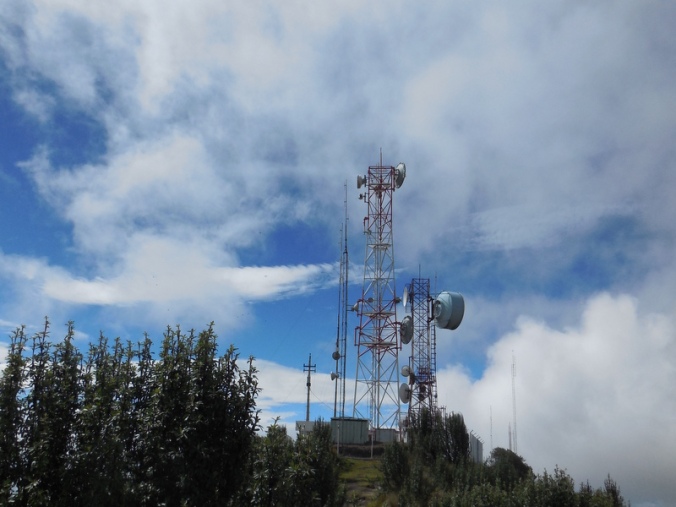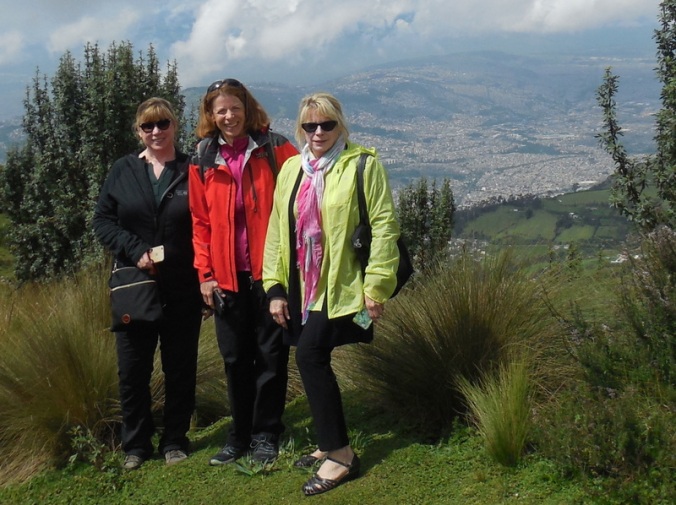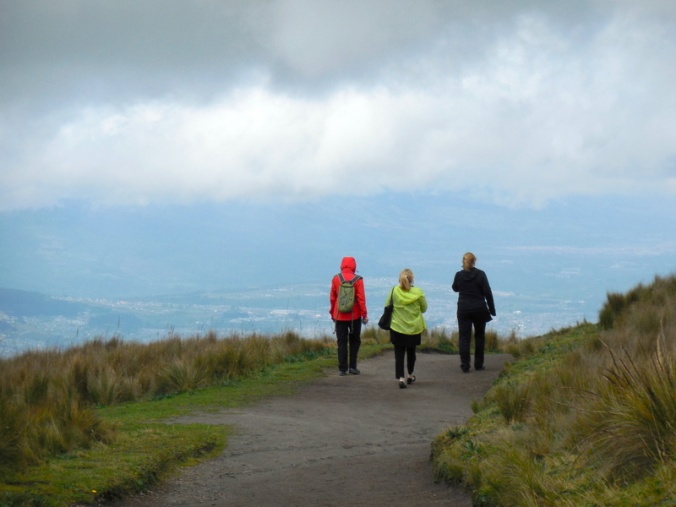(May 24 – written by Dave)
The other day we crossed the equator and it got me thinking back to my grade school days in the northern hemisphere. Back in grade school we learned that the ocean and wind currents rotated clockwise north of the equator and counter-clockwise south of the equator. In grade school I don’t think we learned the detailed science behind these rotations but it didn’t stop me from asking the obvious kid question about bathtubs, that is: “does a bathtub drain counter-clockwise south of the equator”. The major currents can be seen in the graphic below.

I honestly don’t remember the answer I was given as a kid but I can say that it didn’t completely satisfy me. I know this because as a young professional adult, when I first travelled below the equator on a business trip, toilet and bathtub drainage was one of the first things that I checked. In fact many of my northern hemisphere buddies asked me about this very thing when I got back home.
Which brings me to the Coriolis effect. I know what you’re thinking, “the what?” Had it not been for a wonderful geography class I happened to take in college, I’d probably never heard of it either. The class was much more than just geography; it covered many of the earth’s natural systems, including the flow of glaciers, weather patterns, the oceans and more. I think I still have the text book from that class somewhere (if Nancy hasn’t culled it).
Anyway, the Coriolis effect is first described by French scientist Gaspard-Gustave de Coriolis in a publication in 1835. He described the effect in the context of water wheels. In the early 1900s the effect was used to describe air and water pattern movement on a global scale. In a nutshell, it goes like this…
As the earth turns (spins) around its axis everything attached to it turns with it. That is, mountains turn, freeways turn, buildings turn, basically everything turns that is attached. Water and air are only loosely attached to the earth so they turn as well, but not at the same rate as connected objects. Turning at a slower speed creates an arch to their paths, when viewed relative to the earth. This is the Coriolis effect.
It might be easier to visualize this by thinking of an airplane (a clearly non-attached object) flying north from the equator to the North Pole. If the plane flies due north and is observed from space, it would appear to be flying on an arc to the right as the earth turns below it. The pilot thinks they are flying straight north, but the line drawn on the earth’s surface would show a definite arc to it. The same is true for warm equatorial water and air systems. As the earth spins, these warm bodies travel north or south from the equator. They follow an arc to the right in the northern hemisphere and an arc to the left in the southern hemisphere.
Obviously, all the air and water doesn’t stay at the poles, it cools and comes back down (or up in the south). As this happens, the earth keeps turning, the air and water returning to the equator move in the opposite relative sideways direction. They follow an arc to the left in the northern hemisphere and an arc to the right in the southern hemisphere. The movement up and down in this way creates the circular currents seen in the above graphic.
So back to the bathtub question. Everything I said about non-attached objects is true for the water in a bathtub, however, the Coriolis effect is really only observable on larger objects. When it comes to a toilet or bathtub, there is not enough water or time to have a measurable effect. The direction of drainage has everything to do with how the device was designed and nothing to do with larger earth physical systems. So, maybe the first southern hemisphere toilet I checked all those years ago drained counter-clockwise, I can’t remember. Regardless, whatever way it drained, it had nothing to do with the Coriolis effect.
Planning a bicycle trip around Coriolis-effect winds can be problematic. Local winds often blow the other direction and we are not taking any boats, so currents don’t matter that much to us. . If, however, you take a close look at the first graphic again, you might surmise that we’d get headwinds on the left side of South America (Chile) and tailwinds on the right side (Argentina). There is some truth to this on the coasts but not as much up on the Patagonian plateau where we will be cycling. Therefore, today’s mention of the Coriolis effect will probably be the first and last in this blog.
Anyway, more on Patagonia later. We are still in Quito and there is more to report here. Today we decided to climb a mountain. Well, not an entire mountain but we did get pretty high up. Here in Quito they have a gondola called Teleferico, that goes up one of the near-by volcanoes. You take a taxi up from the city to about 3,000 meters, then the gondola up another 1,000 meters. The top station is at 4,050 meters. From there, if you are brave, you can climb beyond 5,800 meters. We only walked up to maybe 4,200 meters where the upper viewpoint was located.

Towers on the top

Get a little winded and you can get an Oxygen hit

Rugged mountains here

Lupine and the city below

More of the city
4,200 meters was more than enough – that’s over 13,700 feet. We were all a little bit winded and moving slowly. Nancy’s sisters did great, especially when you consider that they live at basically sea level and only arrived in Quito (9,000 feet) a few days ago. At least Nancy and I have been living with the Andes for a few weeks and have had a chance to acclimate. And full marks to all three sisters really, they don’t like bumpy, windy, vertigo inducing rides of any kind – something about long childhood car trips and getting sick in a coffee can, in the back seat of the family station wagon…

Gretchen, Nancy and Kathie

Mountain flowers – me stopping to catch my breath

More flowers

We didn’t write this but liked the semitment

Heading down from the view point and to thicker air
Anyway, the morning clouds mostly burned off by the time we reached the top and the views were amazing. We all took too many photos but we have an excuse. You see, stopping for a photo meant that you could stop walking for a time – this was important so as not to look too out of shape to everyone else.

Another view of the city below

And another
Nancy’s sisters fly back to Portland late tomorrow night. We’ve had a lot of fun playing with them for a week – they are both pretty good sports. We certainly appreciate all the supplies they brought down and especially the bike tires. Over the weekend we’ll change AirB&Bs and get our Spanish notes out. Nancy says that we have to “study all weekend” so as not to embarrass ourselves in class. Me, I’m not too stressed as we are in a private two person class and there is no one to impress but each other. Surely by the end of next week, we’ll be effluent in something, if not at least a little better at speaking Spanish.

Fernando and Dave – we got our bikes back yesterday – they did a great job – we’re ready for the deep south now!
That’s all for now, I’m off to see which way our toilets flush – as believe it or not, I’ve not yet checked that here yet.
A walk at the 14.7K mark is impressive. Well above the height of Mt. Hood. Good to hear you are outfitted with new tires now. You should have a good supply on hand. How many will you take with you for the rest of the trip? I have seen videos at towns on the equator where a friendly local will demonstrate the Coriolis effect with a couple buckets of water not too many feet apart on each side of the equator. Of course taking donations from tourists for the effort. To make a good, donation worthy demonstration the water always does what is expected. As you mentioned, the shape of the container and initial imparted motion is the only thing determining flow in a bucket but it makes the tourists happy and generates good tips.
Our SPOT message from the equator came in as something like -0.001488. So it does beg the questions:
1 Is SPOT off?
2. If not, how does the guy you noted above know where to put his buckets?
Haha
Now I know why I rode from N to S on the California coast! Did this 3 times in my youth. Would be fun to do again. WOW, 4200 meters! That’s like being on the top of Haleakala on Maui. I was huffing and puffing as we had just driven up from sea level. The view photos of the city are great! Thanks for sharing.
We were all moving slow. Someday I’d like to ride up Haleakala, slowly as well.
Dave your talk of the Coriolis effect at 530 pm on a Friday evening after 2 red wines started to hurt my brain… i had to fast forward to the pictures! 🙂 but i did the same experiment in Borneo myself years ago as long as everyone agrees they are cyclones not hurricanes im OK
It is a hurricane, a cyclone or a typhoon? Same thing really, just depends on where it happens.
Great photos of Quito, especially with Lupine flowers in bloom. So glad you are able to take a break and have had family fun.
Thanks Jack – it is nice have some down-time.